Introduction to Modern Web Design and User Interface
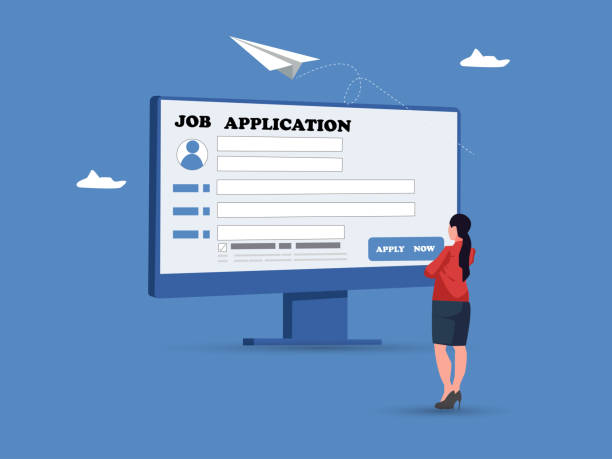
In today’s digital age, where competition for attracting and retaining audiences is intense, website design with a modern user interface is no longer a luxury but an undeniable necessity.
This approach goes beyond mere visual aesthetics, focusing on creating a smooth, pleasant, and efficient experience for the user.
The main goal of #modern_website_design is to provide a platform that not only meets users’ needs but also exceeds their expectations and builds loyalty.
User Interface (UI) refers to all visual and interactive elements that a user interacts with, including buttons, icons, images, and input forms.
In contrast, User Experience (UX) is a broader concept that encompasses the overall feeling and mood of the user when interacting with a product or service.
This feeling can range from the ease of finding information to the enjoyment of the purchase process.
Modern design intertwines these two components to bring the best possible state for users.
In this article, we will deeply explore various aspects of website design with a modern user interface and try to provide a comprehensive outlook on this vital field.
This section is an #explanatory and #educational introduction for a better understanding of these fundamental concepts, which form the basis of every website’s success in today’s world.
Are you annoyed by losing customers who visited your site to buy?
RasaWeb is your specialized solution for having a successful online store.
✅ Significant increase in your online sales
✅ Building trust and professional branding with customers⚡ Get free consultation from RasaWeb experts!
Key Principles in Modern User Interface (UI) Design
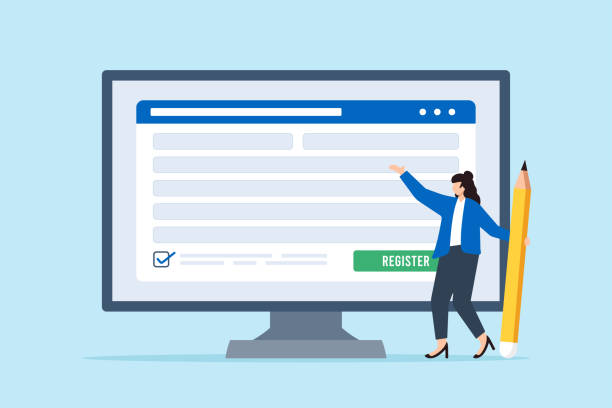
In the fast-paced world of web design, adhering to the key principles of modern user interface design is crucial for creating an engaging and user-friendly experience.
The first principle is “Simplicity”.
A modern UI should be free from any unnecessary complexity so that the user can easily achieve their goal.
Eliminating superfluous elements and focusing on the main content is the way to achieve this simplicity.
The second principle is “Consistency”; meaning that elements and behaviors throughout the website should be integrated and predictable.
This helps users quickly interact with different parts of the site without needing to relearn.
The third principle is “Feedback”; the system should respond to every user action, whether this response is visual or via a text message.
For example, changing the color of a button after a click.
“Visual Hierarchy” is the fourth principle, where more important elements should appear more prominent to guide the user’s eye towards them.
This can be done using size, color, or white space.
The fifth and one of the most important principles is “Transparency”; the user should know where they are at any given moment and what they can do.
These principles are the cornerstone of any website design with a modern user interface, ensuring not only visual beauty but also efficiency and usability.
This section, provided as #expert and #guidance, helps you gain a deeper understanding of how to implement these principles in your projects.
The Role of User Experience (UX) in the Success of Modern UI Website Design

User Experience (UX) is the backbone of any website design with a modern user interface, and without it, even the most beautiful websites may fail to attract and retain users.
UX means deeply understanding user needs, behaviors, and expectations to design a product that not only looks good but is also easy and pleasant to use.
The UX process includes various stages such as User Research, Wireframing, Prototyping, and Usability Testing.
User research helps us gather information about our target audience and gain a better understanding of their problems and needs.
Wireframes are initial, simple layouts of page structure and content, while prototypes are interactive versions of the design that allow for testing and feedback before final coding.
A strong user experience leads to increased conversion rates, reduced bounce rates, and ultimately, business growth.
In fact, website design with a modern user interface is successful when it prioritizes user needs.
This section provides an #expert and #analytical discussion of how to integrate UX into the design process.
Comparing User Interface (UI) and User Experience (UX)
| Feature | User Interface (UI) | User Experience (UX) |
|---|---|---|
| Main Focus | Product’s appearance and feel | User’s overall experience with the product |
| Key Question | How does the product look? | How does the product work and how does it make the user feel? |
| Elements Included | Colors, fonts, buttons, icons, images | Research, wireframing, prototyping, usability testing |
| Ultimate Goal | Visual appeal and interactivity | User satisfaction and achieving business goals |
New Tools and Techniques in UI/UX Development

With technological advancements, numerous tools and techniques have emerged to facilitate the process of website design with a modern user interface.
Tools like Figma, Sketch, and Adobe XD enable collaborative design, rapid prototyping, and easy delivery of designs.
These tools, with their advanced capabilities, allow designers to quickly turn their ideas into reality and collaborate more smoothly with development teams.
Alongside tools, new techniques also play a significant role in improving design quality.
One such technique is “Design Systems”.
A design system is a comprehensive set of standards, components, and guidelines that ensures consistency and uniformity across all products of a brand.
This approach significantly reduces time and cost, especially in large projects and with multiple teams, and helps with better organization.
“Atomic Design” is also a methodology for building design systems, based on constructing smaller components and combining them to build larger sections.
Using these tools and techniques not only increases speed and efficiency in the process of website design with a modern user interface but also significantly contributes to improving the final product quality.
This section includes #educational and #expert content for professionals in this field.
Are you tired of losing business opportunities due to not having a professional corporate website?
RasaWeb, with its professional corporate website design, helps you:
✅ Build a powerful and reliable image for your brand
✅ Convert website visitors into loyal customers
⚡ Get a free consultation now!
Responsiveness and Accessibility: Pillars of Modern Design
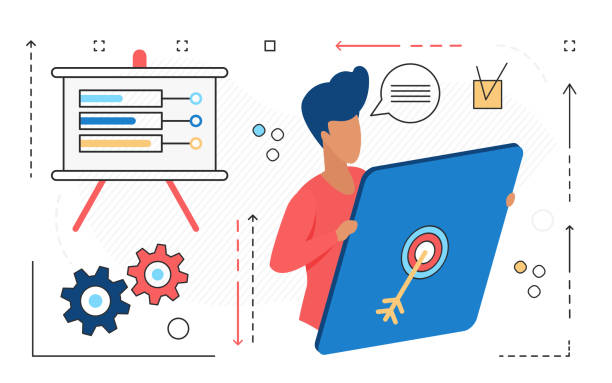
In today’s world, where users access the internet from various devices, “Responsiveness” has become a vital principle in website design with a modern user interface.
Responsive design means that your website should automatically and optimally adapt to the screen size of the user’s device (from mobile and tablet to laptop and TV) and provide a seamless and enjoyable experience.
This approach usually starts with “Mobile-first”, meaning designing for the smallest screens first and then expanding to larger ones.
Alongside responsiveness, “Accessibility” is also of high importance.
A highly accessible website allows individuals with special needs (such as visual, auditory, motor, or cognitive impairments) to easily use the site’s content and features.
This includes using alt text for images, appropriate color contrast, keyboard navigation, and adhering to WCAG (Web Content Accessibility Guidelines) standards.
Ignoring accessibility not only leads to losing a significant portion of the audience but can also result in legal issues.
These two concepts, responsiveness and accessibility, are the main pillars of a website design with a modern user interface, ensuring that the website is usable for all users and under all conditions.
This section is #explanatory and #guidance.
The Psychology of Color and Typography in User Interface Design

The choice of color and font is not merely an aesthetic decision; rather, in website design with a modern user interface, these two factors play a significant role in user psychology and conveying the site’s message.
Color psychology is the study of how colors affect human emotions and behaviors.
For example, blue typically evokes a sense of trust and calmness, while red can convey excitement or warning.
Choosing the right color palette should align with the brand identity and the site’s objective, creating an emotional and memorable experience for the user.
On the other hand, typography, or the art and technique of arranging and composing type and text, is equally important.
The selection of appropriate fonts, font size, line-height, and letter-spacing all impact content readability and visual appeal.
Modern fonts typically feature clean and legible designs that aid in quickly understanding content.
Poor typography can make even the best content inaccessible.
In a website design with a modern user interface, balancing aesthetics and functionality in the choice of colors and fonts is essential.
The goal is not only for the site to look beautiful but also for messages to be effectively conveyed and for the user to feel comfortable and satisfied.
This section is #entertaining and #expert, providing interesting insights.
Challenges and Solutions in Modern UI Website Design
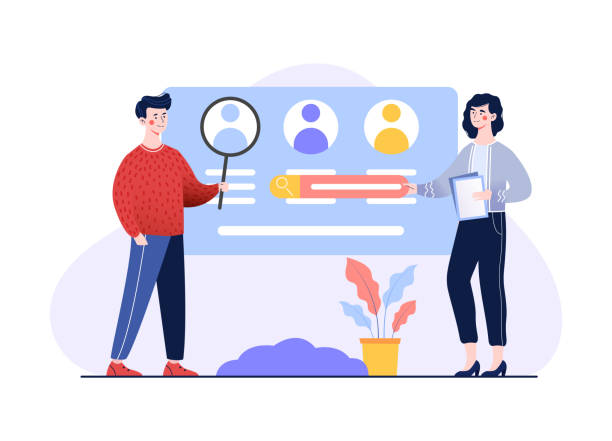
Despite numerous advantages, website design with a modern user interface is not without its challenges.
One of the biggest challenges is maintaining optimal performance alongside visual aesthetics and advanced interactive features.
Excessive use of high-quality images, heavy animations, and JavaScript libraries can slow down site loading, which severely negatively impacts user experience.
The solution to this challenge is image optimization, code compression, and smart use of lazy loading.
Another challenge is the balance between creativity and usability.
Sometimes designers get so immersed in creating innovative designs that they overlook fundamental usability principles.
The solution is to always remember that the main goal is to create a user-friendly experience.
Also, keeping up with new trends and emerging technologies is an ongoing challenge.
The web space is rapidly changing, and what is considered modern today may become obsolete tomorrow.
Continuous updating of knowledge and skills is essential to cope with this challenge.
Website design with a modern user interface requires a deep understanding of these challenges and offering creative and effective solutions.
This section analytically and as #guidance examines these issues.
Common Challenges and Solutions in Modern Web Design
| Challenge | Explanation | Solution |
|---|---|---|
| Poor Performance | Large images, heavy code, excessive animations | Image optimization, code compression, Lazy Loading |
| UI/UX Balance | Prioritizing aesthetics over functionality | Continuous usability testing, user feedback |
| Keeping up with Trends | Rapid changes in technology and user preferences | Continuous learning, market research, flexible approach |
| Accessibility | Ignoring the needs of specific users | Adherence to WCAG standards, testing with disabled users |
The Importance of Testing and Feedback in UI/UX Improvement
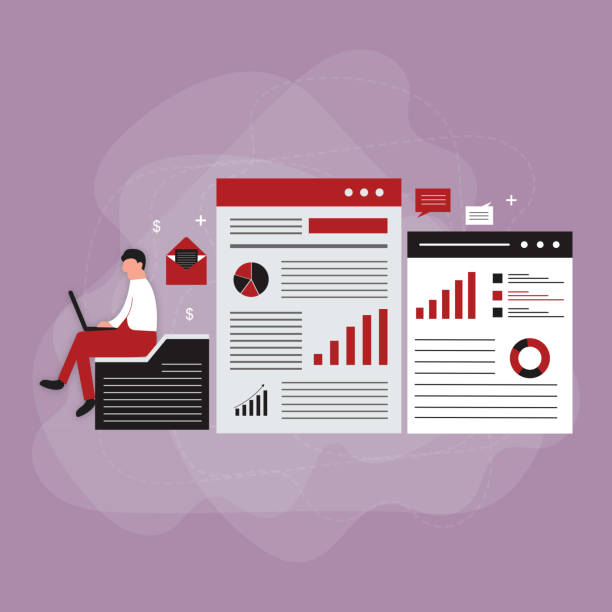
The process of website design with a modern user interface by no means ends after the initial design is complete.
To ensure that the website truly meets user needs and provides a flawless experience, “testing” and “feedback” are essential.
Without these steps, designers’ assumptions might differ from reality, leading to usability issues.
Usability Testing is one of the primary methods where real users try out the site, and their interactions and problems are recorded.
These tests can be conducted in a controlled lab environment or informally and remotely.
Observing how users interact with the site and collecting their opinions provides valuable insights for improvement.
A/B testing is another important method where two different versions of a page or design element (A and B) are shown to different groups of users to determine which version performs better.
This iterative design process helps designers make decisions based on real data and continuously improve the design.
Gathering feedback through surveys, contact forms, and even social media can also help identify strengths and weaknesses.
Website design with a modern user interface is a living, dynamic process that evolves with continuous testing and feedback.
This #educational and #expert section is essential for every web designer.
Losing potential customers due to an unprofessional website? RasaWeb is your answer! With our specialized corporate website design services:
✅ Elevate your business’s credibility and standing
✅ Experience attracting more targeted customers
⚡ Act now to receive a free consultation!
The Future of Modern UI Web Design
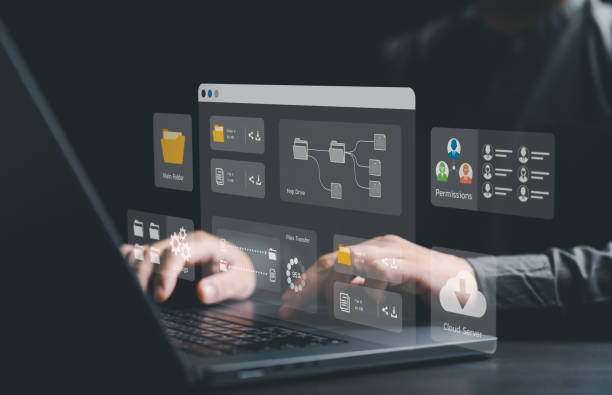
The future of website design with a modern user interface is full of exciting innovations and changes that will elevate user experience to new levels.
One significant trend is the increasing role of Artificial Intelligence (AI) in design.
AI-powered tools will be able to generate initial designs, analyze user data, and even provide unprecedented personalization.
Imagine a system that optimizes the website based on each user’s unique preferences and behaviors! Voice User Interfaces (Voice UI) will also gradually find their place, enabling interaction with websites without the need for looking or typing.
The integration of Augmented Reality (AR) and Virtual Reality (VR) can also create new immersive and interactive experiences on the web, especially in areas like online shopping or education.
Furthermore, we expect to see an increased focus on “Micro-interactions”; small, subtle elements that provide visual or auditory feedback and give the website a sense of dynamism and life.
These are just some of the changes that will shape the future of website design with a modern user interface.
Designers must always be curious, learn new technologies, and keep pace with these developments to stay at the forefront of these advancements.
This section provides a #news, #thought-provoking, and #analytical perspective.
Conclusion and Next Steps for Modern UI Website Design

In summary, website design with a modern user interface is a comprehensive approach that blends visual aesthetics with high performance and flawless user experience.
From simplicity and consistency in UI to the importance of user research and UX testing, every aspect of this process is vital for creating a successful website.
We saw how responsiveness and accessibility ensure that your website is usable for everyone and on every device, and how the psychology of color and typography influence user perception and feelings.
We also addressed the challenges ahead and solutions to overcome them, and took a look at the exciting future of this field.
For those looking to start or improve their skills in website design with a modern user interface, the next steps include continuously studying new trends and technologies, working with advanced UI/UX tools, participating in workshops, and most importantly, practical exercise and gathering feedback from real users.
Remember that web design is a dynamic field, and the best designers are those who are constantly learning and adapting to changes.
By focusing on user needs and applying modern design principles, you can create websites that are not only beautiful but also leave a real and lasting impact on your audience.
This section is a #guidance and #explanatory summary of the entire article.
Frequently Asked Questions
| Question | Answer |
|---|---|
| What is a modern user interface? | A modern user interface refers to a design that uses new trends, simplicity, excellent user experience, and attractive visual elements. |
| Why is using a modern user interface important in website design? | It helps attract and retain more users, creates a professional impression, improves user experience, and increases conversion rates. |
| What are the main features of a modern user interface? | Simplicity, ample use of white space, readable typography, attractive and harmonious colors, subtle animations, and responsive design. |
| How is responsiveness related to a modern user interface? | Responsive design is an essential feature in a modern user interface, ensuring that the site displays well on all devices (mobile, tablet, desktop). |
| What is the role of typography in modern user interface design? | Choosing appropriate fonts and using them correctly enhances readability and contributes to the site’s aesthetic appeal and visual identity. |
| What is White Space and why is it important in modern UI? | It is the empty space between different elements on the page that helps improve readability, user focus, and creates a sense of cleanliness and order. |
| What is the benefit of using animations in modern user interface design? | Subtle and purposeful animations can grab user attention, improve interaction, and make information transfer more engaging. |
| How can User Experience (UX) be improved alongside a modern user interface? | By understanding user needs, simplifying navigation paths, providing appropriate visual feedback, and easy testability. |
| Does a modern user interface always mean using bright colors? | No, a modern user interface can use a variety of color palettes, including dark colors; the important thing is choosing harmonious colors suitable for the brand. |
| What are the current trends in modern user interface design? | Using Dark Mode, Neumorphism, Glassmorphism, scroll-based animations, and minimalist design. |
And other advertising services of RasaWeb Advertising Agency
Smart Google Ads: Designed for businesses seeking customer behavior analysis through marketing automation.
Smart Brand Identity: A fast and efficient solution for customer attraction, focusing on custom programming.
Smart Social Media: A professional solution for increasing sales, focusing on intelligent data analysis.
Smart UI/UX: Professional optimization for customer attraction using user experience customization.
Smart Website Development: A dedicated service for digital branding growth based on attractive user interface design.
And over hundreds of other services in the field of internet advertising, advertising consultation, and organizational solutions
Internet Advertising | Advertising Strategy | Advertorial
Resources
Website Design Articles on Virgool
Tarhfa Blog: Web Design Category
IranHost Blog: Website Design
MihanWP: UI/UX Category
? To achieve peak success in the digital world, RasaWeb Afarin is your strategic business partner, offering comprehensive digital marketing services including secure website design and professional optimization. Transform your business’s future with us.
📍 Tehran, Mirdamad Street, next to Bank Markazi, Southern Kazeroon Alley, Ramin Alley, No. 6



